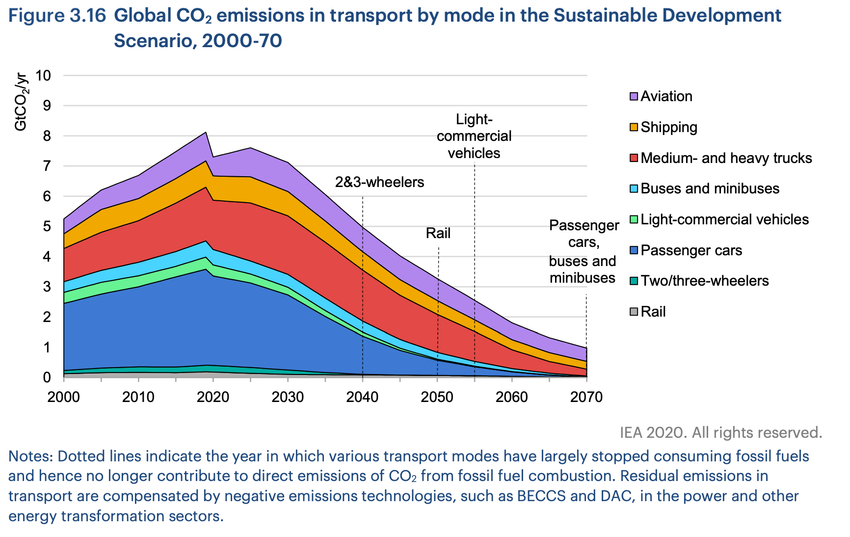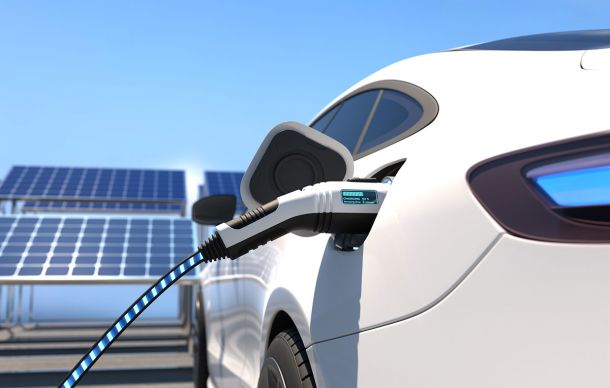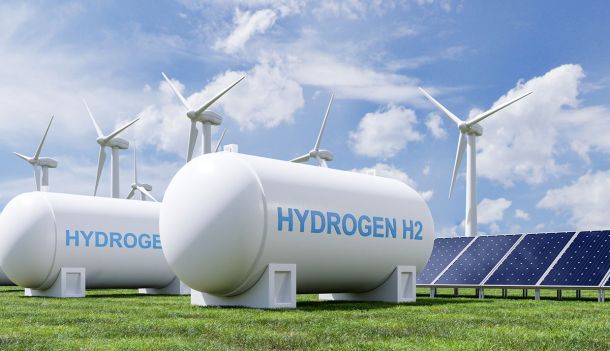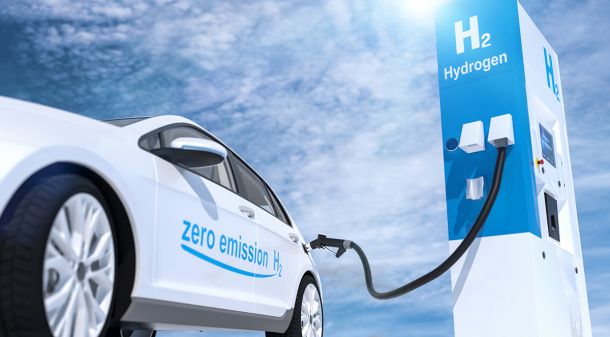INCONCRETO NEWS
Revolutionizing Transport: Green Capital Projects Paving the Path to Sustainable Mobility
Transportation, a cornerstone of modern civilization, is undergoing a remarkable shift. The surge in urbanization and population growth has intensified the strain on transportation systems, leading to congestion, pollution, and increased energy consumption. The traditional reliance on fossil fuels in vehicles has significantly contributed to carbon emissions, prompting a clarion call for change, recognizing the importance of sustainable transportation solutions. As the world struggles with environmental challenges such as global warming and pollution, among others, the need for innovative and eco-friendly mobility options becomes ever more pressing.
Transport accounts for around one-fifth of global carbon dioxide (CO2) emissions (24% if we only consider CO2 emissions from energy]. This data is sourced from the International Energy Agency (IEA). Road travel accounts for three-quarters of transport emissions. Most of this comes from passenger vehicles – cars and buses – which contribute 45.1%. The other 29.4% comes from trucks carrying freight.
Aviation – while it often gets the most attention in discussions on action against climate change – accounts for only 11.6% of transport emissions. It emits just under one billion tonnes of CO2 each year – around 2.5% of total global emissions. International shipping contributes a similar amount, at 10.6%. Rail travel and freight emits very little – only 1% of transport emissions. Other transport – which is mainly the movement of materials such as water, oil, and gas via pipelines – is responsible for 2.2%.
Green capital projects are emerging as a key driver in this shift toward sustainability, revolutionizing the way we move from one place to another. In this article, we’ll explore the concept of Green Capital Projects in the mobility sector and how they are shaping the future of transportation.
Green capital projects in the mobility sector refer to investment initiatives that aim to develop and implement sustainable, environmentally friendly, and socially responsible transportation solutions. These projects can involve a wide range of innovations, including electric vehicles (EVs), public transit improvements, bike-sharing programs, pedestrian-friendly infrastructure, and more. They are often undertaken by governments, private companies, and public-private partnerships with the goal of reducing the ecological footprint of the transportation sector.
Transitioning to a more sustainable transport system in our cities require huge investments, in new technologies and new infrastructures. But “Investing in sustainable mobility is worth the costs”, experts argue, if we want to solve more problems at the same time (Leah Lazer, Naina Khandelwal and Jake Wellman on Infrastructure-channel.com).
Benefits of Green Capital Projects in Mobility are diverse:
- Environmental Benefits: Green capital projects significantly reduce greenhouse gas emissions and air pollution, helping combat climate change and improve air quality.
- Economic Advantages: Investing in green mobility creates jobs, boosts local economies, and reduces the cost of healthcare due to decreased air pollution.
- Enhanced Quality of Life: Promoting walking, cycling, and public transit can lead to reduced traffic congestion, less noise pollution, and improved urban aesthetics, making cities more agreeable.
- Energy Security: Shifting to electric mobility and sustainable fuels reduces dependence on imported oil and enhances energy security.
Because of these profound effects on sustainability, health, economics and quality of life, improving urban transport can solve many problems all at the same time. Shifting a city’s dominant transport mode from private cars to mass transit can prevent sprawl and promote comfortable density, affecting land values and carbon footprints for decades to come. Being able to move efficiently and affordably enables equity and upward mobility by creating access to jobs and education. Switching to electric transport can enhance energy independence by reducing reliance on imported fossil fuels.
Investing in sustainable cities proves to be a strategically sound decision. Research conducted by Vivid Economics and the Stockholm Environment Institute, as part of the Coalition for Urban Transitions’ report Climate Emergency, Urban Opportunity, highlighted the potential. Their analysis revealed that implementing a suite of 16 low-carbon investments and measures within urban areas—encompassing transport, buildings, materials, and waste sectors—could lead to a substantial reduction of up to 90% in global urban emissions by 2050. Furthermore, the present value of these measures amounts to nearly $24 trillion, approximately one-third of the global GDP in 2018.
According to this report, transitioning to a more efficient and electric vehicle fleet in cities worldwide would require a total incremental investment of $8.6 trillion – including additional costs of owning, operating and fuelling electric vehicles and vehicles with higher fuel efficiency. This investment would pay for itself in eight years, with annual returns reaching $320 billion by 2030 and exceeding $1 trillion by 2050, for a net present value of $3.7 trillion. These returns are largely direct savings from reduced fuel use and avoided fuel costs, without considering the economic benefits of lower emissions and cleaner air, which would yield even higher economic returns. This investment could also support 3.6 million jobs by 2030 and avoid 0.71 GtCO2-e by 2050 (and much more with the use of clean electricity). In 2018, Shenzhen, China, became the first city in the world to electrify its entire public bus fleet, and their 16,000 e-buses are estimated to have reduced annual CO2 emissions by 440,000 tons and halved the fuel bill.
There are definitively good reasons to invest in sustainable urban mobility, but governments too will have to play their role in helping remove restrictions. As Daniel Pulido, senior infrastructure specialist for the World Bank wrote, “while the need for sustainable urban mobility is greater than ever before, the available financing is nowhere near sufficient—and the financing gap only grows wider when you consider the need for climate change adaptation and mitigation.”

The Power of Transportation Efficient and Green Investments: Global Initiatives and Success Stories
In response, global initiatives and innovative technologies are reshaping the landscape of transportation. Electrification, shared mobility, autonomous vehicles, and sustainable urban planning are driving the transformation towards a more efficient and eco-friendly transport ecosystem.
In recent years, India has emerged as a trailblazer in the sustainable transportation revolution, focusing strongly on electric vehicles (EVs). The Government’s proactive measures have significantly boosted the EV sector, leading to increased sales and a thriving startup ecosystem. By 2030, the EV two wheeler market is expected to reach 22 Mn units, representing 80% of the overall market. According to Blume EV Primer 2.0 report, EV three wheeler’s new sales are projected to reach 85% penetration, and EV four wheeler sales are set to surpass 900K units by 2030. These investments not only promise sustainability but also hold the potential to reshape the way we move and commute worldwide. This growth potential has positioned the EV sector as an attractive market for investors seeking impact and substantial returns. This has resulted in significant investment in the EV sector, fuelling further innovation and growth and driving India towards greener transportation.
Norway is a northern European country with a small population of 5.4 million people and a large coastline of nearly 29 000 km, including fjords and bays. The country’s sparsely populated areas make it difficult to develop a dense public transport system that connects urban agglomerations across the country. Road transport is therefore by far the most popular mode of transport. In 2021, about two-thirds of new passenger vehicles sold in Norway were fully electric. Norway’s success in promoting electric vehicles has mainly been driven by generous tax incentives, including the exemption of zero-emission vehicles (ZEVs) from the registration tax, VAT and motor fuel taxes, as well as at least a 50% reduction in road taxes, and ferry and parking fees. These fiscal incentives were essential for shifting demand towards ZEVs and increasing their share in the car fleet. Given the success of electric mobility, the government is now working towards building a sustainable vehicle taxation system.
Around the world, countries and organizations are spearheading remarkable initiatives, showcasing the transformative power of efficient and green investments in transportation.
- Europe’s Commitment to Sustainable Mobility: The European Union has been at the forefront of sustainable mobility with ambitious plans to decarbonize transportation. Initiatives include significant investments in electric vehicle infrastructure, incentivizing green mobility, and stringent emission reduction targets.
- China’s Electric Vehicle Drive: China, the world’s largest automotive market, has pledged substantial investments in electric vehicles and charging infrastructure. The country’s push towards electric mobility, backed by significant investments, demonstrates its commitment to reducing emissions and reliance on fossil fuels.
- United States’ Innovation in Autonomous Vehicles: The U.S. is investing heavily in autonomous vehicle technology. Companies in Silicon Valley and across the nation are leading the charge in research and development, aiming to revolutionize transportation through innovative and efficient solutions.
- India’s Sustainable Urban Mobility: India is transforming its urban landscape with a focus on green and sustainable transport. Investments in mass transit systems, renewable energy-based public transportation, and eco-friendly mobility solutions are making significant strides.
Towards Zero Emissions: Navigating Sustainable Mobility in an Increasingly Mobile World
The demand for transportation is expected to soar in the coming decades due to increased population and rising incomes. However, advancements in technology offer a ray of hope. As the world transitions towards lower-carbon electricity sources, the rise of electric vehicles serves as a viable option to curtail emissions from passenger vehicles. The International Energy Agency’s (IEA) Energy Technology Perspectives report anticipates a significant increase in transport emissions due to heightened demand, but major technological innovations can offset this surge. The report outlines a “Sustainable Development Scenario” that aims for net-zero CO2 emissions from global energy by 2070, showcasing pathways for different elements of the transport sector.
While some sectors could potentially decarbonize within decades using electrification and hydrogen technologies, long-distance road freight, aviation, and shipping remain formidable challenges due to technological limitations. Despite a significant reduction in emissions according to the visualized scenario, these sectors are likely to be the largest contributors to energy-related emissions in 2070. Achieving net-zero emissions for the entire energy sector would necessitate “negative emissions” from other parts of the energy system.
Approximately two-thirds of the emissions reductions come from technologies that are not yet commercially available, making it a formidable task to achieve reduced CO2 emissions in the transport sector over the next half-century.
Despite the challenges and complexities, investing in sustainable urban mobility is a strategic decision. While certain sectors present difficulties in achieving zero emissions, ongoing research and innovation offer hope for the development of viable solutions. Efforts toward sustainable transportation are not just a necessity but a collective investment in a greener, more sustainable world for future generations.

INCONCRETO, as an international consultancy, can provide expertise in capital project optimization in the mobility sector.
Connect with our people!
We combine technical expertise with large program execution practices, improving predictable outcomes and steering profitability on Capex/Opex project investments.
For further readings, you may consult these sources:
https://blogs.worldbank.org/transport/maximizing-finance-sustainable-urban-mobility
https://www.conserve-energy-future.com/15-current-environmental-problems.php
https://www.infrajournal.com/en/w/investing-in-sustainable-mobility-is-worth-the-costs
https://urbantransitions.global/urban-opportunity/
Newsletter
© INCONCRETO. All rights reserved. Powered by AYM































